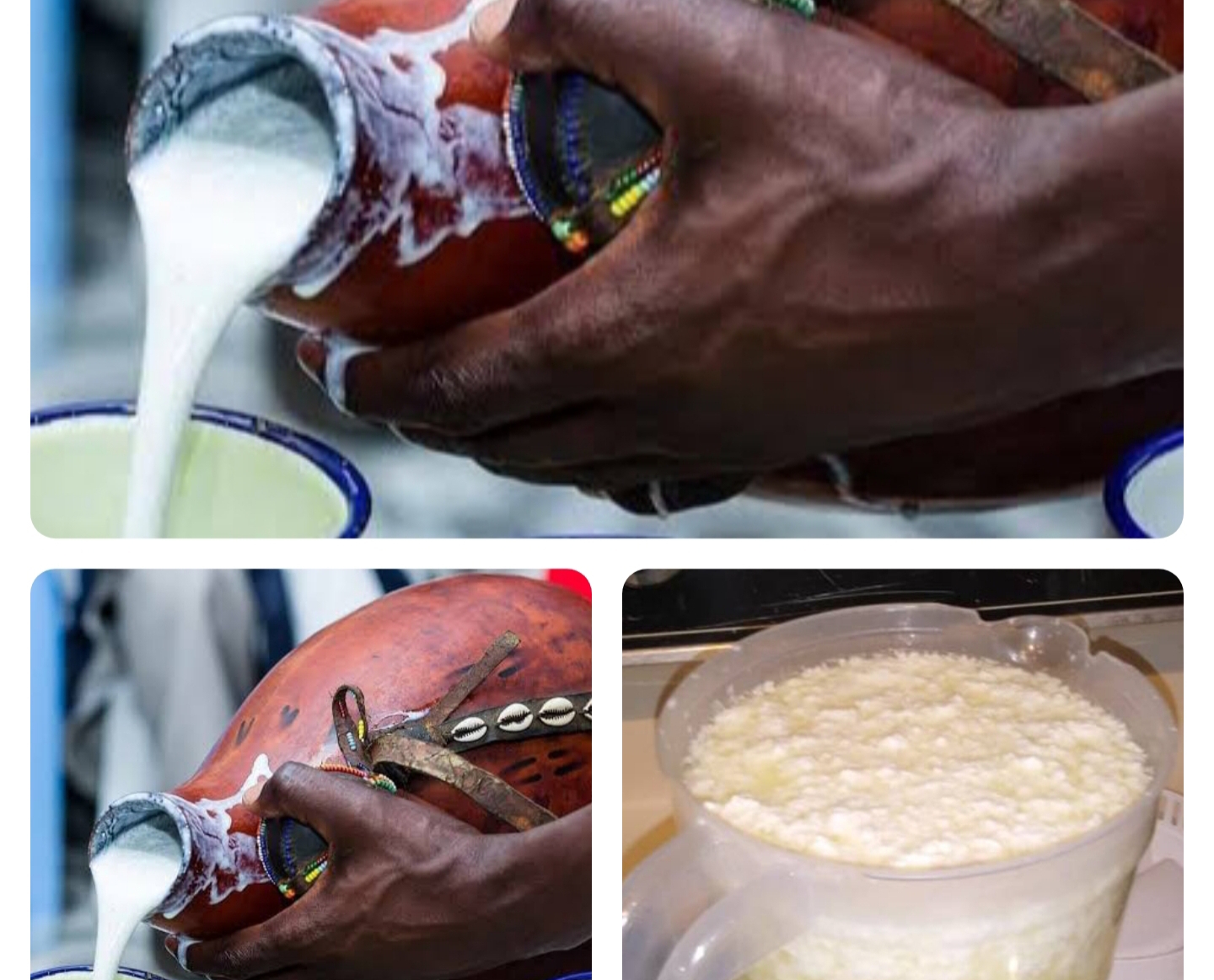
A Taste of Tradition: The Distinctive Delights of Kisii ‘Maruranu’ and Kalenjin ‘Mursik’.

Kenya’s diverse cultures boast a rich tapestry of culinary traditions, with fermented milk products standing out as cherished staples among various ethnic groups. Two of the most notable fermented milk products are ‘maruranu’ from the Kisii and Kuria communities and ‘mursik’ from the Kalenjin community. While both serve as important dietary and cultural elements, they exhibit distinct characteristics in their preparation, flavor, and cultural significance.
•Maruranu – The Kisii/Kuria Delicacy
Maruranu is a traditional fermented milk product from the Kisii and Kuria communities in western Kenya. This delicacy is celebrated not only for its unique taste but also for its health benefits and cultural significance.
Preparation Process
The preparation of maruranu involves a meticulous process that begins with the collection of fresh milk, primarily from cows. The milk is boiled to eliminate any harmful bacteria and subsequently cooled. Once cooled, it is poured into a special container where it is allowed to ferment. No additives or herbs are added to the milk before, during, or after the fermentation process. This process can take several days, during which the milk thickens and develops a slightly tangy flavor.
Cultural Significance
Maruranu is more than just a dietary item; it is a symbol of hospitality and communal bonding. It is often served during family gatherings and is typically enjoyed alongside ugali and sweet potatoes. The preparation and sharing of maruranu reinforce family ties and cultural identity within the Kisii and Kuria communities.
•Mursik – The Kalenjin Staple
Mursik, on the other hand, is a renowned fermented milk product among the Kalenjin community in Kenya’s Rift Valley region. Known for its distinctive appearance and taste, mursik is a product of a rich cultural heritage.
Preparation Process
The preparation of mursik also begins with fresh cow’s milk, which is boiled and then left to cool. The cooled milk is transferred into a ‘sotet,’ a traditional gourd specially prepared for this purpose. Before the milk is poured in, the gourd is treated by smoking it with specific herbs and branches, such as ‘senetwet’ (Solanum incanum), which imparts a unique flavor and acts as a preservative. The fermentation process for mursik typically lasts several days, during which the milk undergoes a transformation, developing a rich, tangy flavor and a thick consistency. The addition of charcoal from the smoked herbs gives mursik its characteristic speckled appearance and slightly gritty texture.
Cultural Significance
For the Kalenjin, mursik is a symbol of cultural pride and identity. It is traditionally consumed during ceremonies, rites of passage, and as a post-run refreshment for athletes, given the Kalenjin’s reputation for producing world-class runners. The preparation of mursik is often a communal activity, involving various family members, thus reinforcing communal bonds and passing down traditions through generations.
Distinct Differences
While both maruranu and mursik are fermented milk products integral to their respective communities, several differences set them apart:
1. Flavor Profile : Maruranu has a subtle flavor derived from the fermentation process, while mursik has a more pronounced herbal and smoky taste due to the specific herbs used in smoking the gourd.
2. Appearance : Mursik often has a speckled appearance due to the charcoal from smoked herbs, whereas maruranu maintains a more uniform, creamy consistency.
3. Fermentation Process : The types of containers and smoking methods used in the fermentation process differ, contributing to the unique tastes and textures of each product.
4. Cultural Context : Both products hold significant cultural importance, but they are celebrated and consumed in different contexts reflecting the social practices of the Kisii, Kuria, and Kalenjin communities.
Conclusion
In the vibrant culinary landscape of Kenya, ‘maruranu’ and ‘mursik’ stand out as more than just fermented milk products. They are embodiments of cultural identity, historical continuity, and communal harmony. Each sip of maruranu and mursik offers a taste of tradition, meticulously preserved through generations. The unique preparation methods and distinct flavors of these beverages highlight the ingenuity and rich heritage of the Kisii, Kuria, and Kalenjin communities. Celebrating these differences not only enriches our appreciation of Kenya’s diverse culinary practices but also fosters a deeper connection to the cultural narratives that shape them.
Article By Suzy Nyongesa.
